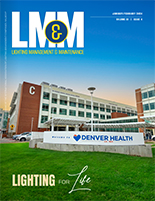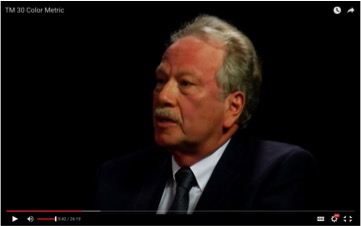Your humble editor sat down with Dr. Kevin Houser, Mark Lien, and Dr. Mark Rea to discuss the new IES technical memorandum for color metrics, TM-30.
This was one of the most fascinating discussions I have been a part of and it did not end when the cameras stopped.
After the discussion we heard first from Dr. Houser and then from Dr. Rea.
Dr. Houser took issue with Dr. Rea’s comments about not having data to support TM-30. In the video, Dr. Rea stated, “This is the misleading part. Kevin used the word accuracy, but you in truth have no idea what accuracy means. You’ve never done a test … it’s being oversold as more accurate because it has 99 chips, when there is no proof that that makes any difference at all.”
Dr. Houser provided the following documentation:
On the contrary, there is considerable evidence that IES Rf is more accurate than CIE Ra. This is primarily because of the new set of 99 color evaluation samples. The fact that light sources can be selectively optimized (or “gamed”) to have higher values of CIE Ra without increasing actual color fidelity is not a conceptual problem with the CIE system, but a mathematical problem. Thus, the mathematical limitations of CIE Ra were addressed with a rigorous reworking to produce the TM-30 calculation engine. Journal articles that provide direct quantitative evidence in support of TM-30 include:
- Optics Express journal article that provides overview of the TM-30-15 method Development of the IES method for evaluating the color rendition of light sources. https://bit.ly/1J32ftZ
- LEUKOS journal article supporting TM-30-15’s technical foundations Why Color Space and Spectral Uniformity Are Essential for Color Rendering Measures. https://dx.doi.org/10.1080/15502724.2015.1091356
In addition, Dr. Rea stated, “…can’t actually see a difference between 78 and 80 anyway.” To that, Dr. Houser replied, “Any single number (whether CIE Ra or IES Rf) is intrinsically limited and unable to characterize all dimensions of color rendering. Two sources that have the same score for fidelity may in fact make objects appear very visibly different. Mike Royer and Tommy Wei created a portable demonstration to make this point (among others), and we have demonstrated it at the IALD, PLDC, and IES conferences.”
Dr. Houser copied Dr. Rea on the above responses.
Dr. Rea responded, “…There are no data whatsoever to support his claim that the metrics offered in TM-30 are more, less or the same as alternative metrics for predicting subjective judgments of color appearance.”
Dr. Rea went on to say, “The 99 chips argument is related to “gaming” not to accuracy. His “gaming” argument is specifically related to manufacturers trying to meet an arbitrary criterion for a given metric, but “gaming” to meet an arbitrary criterion is not directly related to what people see. There may be collateral consequences of “gaming” for color perception but it seems unlikely that “gaming” makes color rendering worse. It seems more likely that reputable manufacturers would only release a lamp that either perceptibly improved color rendering or made no perceptible difference. I know of no evidence that suggests manufacturers have made color rendering worse by “gaming.”
Rea concluded his email with the following statement, “We have been publishing our research on color rendering for many years, so I appreciate the opportunity share my insights on this video.”




